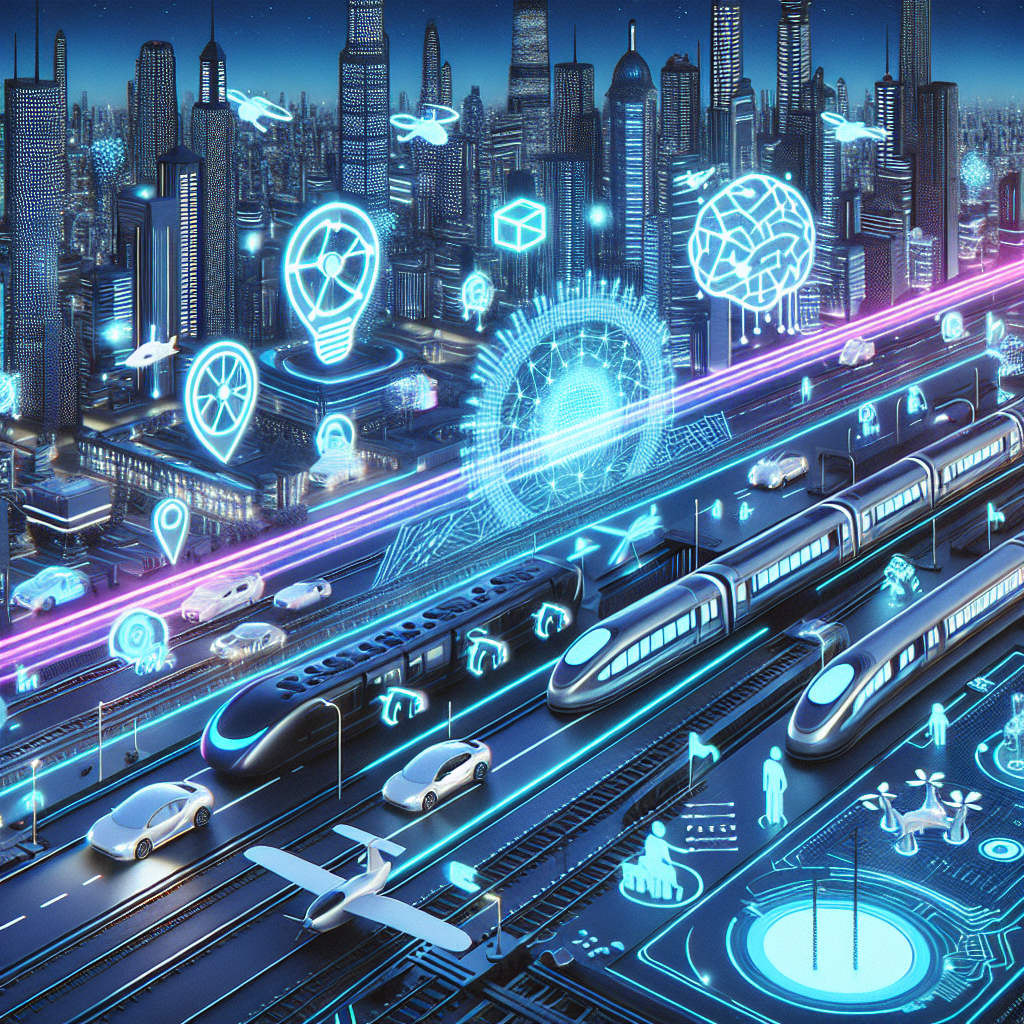Artificial Intelligence (AI) is rapidly reshaping the way we think about transportation planning. From autonomous vehicles to traffic management systems, AI technology is playing a crucial role in revolutionizing the future of transportation. In this article, we will explore how AI is transforming the transportation industry and shaping the way we plan for the future.
AI in Transportation Planning
Transportation planning is a complex and challenging task that involves analyzing data, predicting traffic patterns, and designing efficient transportation systems. With the help of AI, transportation planners can now leverage advanced algorithms and machine learning techniques to optimize traffic flow, reduce congestion, and improve overall efficiency.
One of the key applications of AI in transportation planning is in the development of autonomous vehicles. These self-driving cars use AI algorithms to navigate roads, detect obstacles, and make real-time decisions to ensure safe and efficient travel. By incorporating AI into autonomous vehicles, transportation planners can reduce traffic accidents, increase road capacity, and improve overall mobility.
AI is also being used to optimize traffic signals and control systems. By analyzing real-time traffic data and using predictive analytics, AI algorithms can adjust traffic signals to reduce congestion, minimize delays, and improve the overall flow of traffic. This not only helps to improve traffic efficiency but also reduces emissions and fuel consumption, making transportation more sustainable.
Furthermore, AI technology is being used to analyze and predict travel patterns, enabling transportation planners to better understand the needs of commuters and design more effective transportation systems. By analyzing data on commuting behaviors, traffic volumes, and public transportation usage, AI algorithms can help planners identify areas of high demand and develop targeted solutions to improve accessibility and connectivity.
The Future of Transportation Planning
As AI technology continues to advance, the future of transportation planning looks increasingly promising. With the ability to analyze vast amounts of data and make real-time decisions, AI has the potential to revolutionize the way we plan, design, and manage transportation systems.
One of the key benefits of AI in transportation planning is its ability to optimize resources and improve efficiency. By using AI algorithms to analyze data and predict traffic patterns, transportation planners can develop more efficient transportation systems that reduce travel times, minimize delays, and improve overall mobility. This not only benefits commuters but also helps to reduce emissions and lower transportation costs.
Another key advantage of AI in transportation planning is its ability to enhance safety and security. By incorporating AI into autonomous vehicles and traffic management systems, transportation planners can reduce the risk of accidents, improve emergency response times, and create safer roadways for all users. This not only improves the overall quality of transportation but also enhances the overall quality of life for communities.
In addition, AI technology can help to improve accessibility and connectivity in transportation systems. By analyzing travel patterns and identifying areas of high demand, transportation planners can develop targeted solutions to improve access to public transportation, reduce travel times, and enhance connectivity between different modes of transportation. This not only improves accessibility for all users but also promotes sustainable transportation practices.
Overall, the future of transportation planning is bright with the integration of AI technology. By leveraging advanced algorithms and machine learning techniques, transportation planners can develop more efficient, safe, and sustainable transportation systems that benefit communities, reduce emissions, and improve overall mobility.
FAQs
Q: How is AI being used in autonomous vehicles?
A: AI is being used in autonomous vehicles to navigate roads, detect obstacles, and make real-time decisions to ensure safe and efficient travel. By incorporating AI into autonomous vehicles, transportation planners can reduce traffic accidents, increase road capacity, and improve overall mobility.
Q: How is AI being used to optimize traffic signals?
A: AI is being used to optimize traffic signals by analyzing real-time traffic data and using predictive analytics to adjust traffic signals to reduce congestion, minimize delays, and improve the overall flow of traffic. This helps to improve traffic efficiency, reduce emissions, and lower transportation costs.
Q: How is AI being used to analyze travel patterns?
A: AI is being used to analyze travel patterns by analyzing data on commuting behaviors, traffic volumes, and public transportation usage. By analyzing this data, transportation planners can better understand the needs of commuters, identify areas of high demand, and develop targeted solutions to improve accessibility and connectivity.
Q: How does AI enhance safety and security in transportation systems?
A: AI enhances safety and security in transportation systems by reducing the risk of accidents, improving emergency response times, and creating safer roadways for all users. By incorporating AI into autonomous vehicles and traffic management systems, transportation planners can create safer transportation systems that benefit communities and improve overall quality of life.

